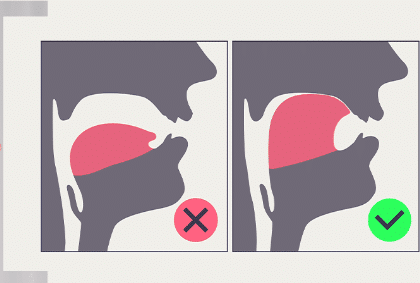Mewing is a facial exercise technique that has gained significant popularity in recent years, particularly among individuals seeking to enhance their facial aesthetics. The practice involves correct tongue posture, where the tongue is positioned against the roof of the mouth. Advocates claim that it can improve facial structure, aid in proper jaw alignment, and even improve breathing. However, there are also detractors who argue that its benefits may be overstated or misunderstood. In this blog, we will explore the pros and cons of mewing, providing a comprehensive view to help you make an informed decision.
What is Mewing?
Before diving into the pros and cons of mewing, it’s essential to understand what mewing actually is. Mewing was introduced by Dr. John Mew, a British orthodontist, who believed that proper tongue posture can influence the development of facial structures. The main principle of mewing is maintaining the tongue on the roof of your mouth, specifically the soft and hard palate, with the lips closed and teeth slightly touching.
Proponents of mewing suggest that this practice can help with:
- Improving facial appearance by creating a more defined jawline
- Preventing crooked teeth
- Improving breathing patterns
- Alleviating jaw pain or temporomandibular joint (TMJ) issues
Pros of Mewing
- Improved Jawline and Facial Structure One of the most talked-about benefits of mewing is its potential to improve facial structure, particularly the jawline. By encouraging correct tongue posture and mouth closure, mewing may promote upward growth of the maxilla (upper jaw). This can result in a more defined jawline and improved facial aesthetics over time.
- Enhanced Breathing Mewing encourages nasal breathing, which is beneficial for overall respiratory health. Mouth breathing is often associated with various health issues like sleep apnea, dry mouth, and snoring. By promoting nasal breathing, mewing helps in better oxygen intake and can lead to fewer respiratory issues.
- Posture Correction Surprisingly, mewing may also have benefits beyond facial appearance. Tongue posture can affect head and neck alignment. Over time, maintaining the correct tongue posture may lead to better posture, reducing the risk of tension and pain in the neck and upper back.
- Improved Oral Health Mewing encourages proper mouth closure and tongue placement, which can contribute to better oral hygiene. People who mouth-breathe often experience issues like dry mouth, gum disease, and bad breath. Mewing may reduce these risks by promoting oral equilibrium.
- Possible Help with Sleep Disorders For individuals suffering from obstructive sleep apnea or snoring, mewing could provide some relief. By encouraging nasal breathing and proper jaw alignment, mewing may reduce airway blockages during sleep, potentially leading to more restful nights.
Table 1: Summary of the Pros of Mewing
| Pros | Description |
|---|---|
| Improved Jawline | May create a more defined and aesthetically pleasing jawline |
| Enhanced Breathing | Encourages nasal breathing, which is better for respiratory health |
| Posture Correction | May improve overall posture by aligning the head, neck, and spine |
| Improved Oral Health | Promotes better oral hygiene by encouraging proper mouth closure |
| Help with Sleep Disorders | May alleviate conditions like snoring and obstructive sleep apnea |
Cons of Mewing
- Lack of Scientific Evidence Despite its growing popularity, mewing lacks extensive scientific studies to back up many of its claims. Most of the evidence supporting mewing is anecdotal, and some experts argue that the results people attribute to mewing could be coincidental or the result of other factors like weight loss or aging.
- Long-Term Commitment Mewing is not a quick fix; it requires long-term commitment and practice. It can take months or even years to notice any significant changes in your facial structure or other claimed benefits. For those expecting immediate results, mewing might be a source of frustration.
- Risk of Incorrect Practice Improper mewing techniques can lead to unintended consequences such as discomfort, jaw pain, or even worsening of TMJ issues. It’s important to understand the correct tongue posture and not to force your tongue in an unnatural position, which could cause strain.
- Uncertain Results While some people report dramatic improvements, others see little to no changes, even after consistent practice. Since facial structure varies from person to person, mewing may not yield the same results for everyone, making it a gamble for those seeking aesthetic changes.
- Psychological Impact For individuals who become overly fixated on facial aesthetics, mewing can potentially lead to body dysmorphia or unhealthy obsessions with appearance. The pressure to achieve a certain facial structure could have negative effects on mental health, especially for those not seeing the results they desire.
Table 2: Summary of the Cons of Mewing
| Cons | Description |
|---|---|
| Lack of Scientific Evidence | Minimal scientific backing for mewing’s effectiveness |
| Long-Term Commitment | Requires months or years of consistent practice |
| Risk of Incorrect Practice | Incorrect tongue posture can lead to jaw pain or worsening TMJ issues |
| Uncertain Results | Results vary significantly from person to person |
| Psychological Impact | Can contribute to unhealthy obsessions with facial aesthetics |

How to Mew Correctly?
- Tongue Placement: Ensure that your tongue is fully pressed against the roof of your mouth, covering both the soft and hard palate.
- Mouth Closure: Keep your lips closed but relaxed.
- Teeth Contact: Your upper and lower teeth should gently touch but without clenching.
- Breathing: Always breathe through your nose, not your mouth.
Frequently Asked Questions (FAQs)
- Does mewing actually work? The effectiveness of mewing is largely anecdotal, and scientific studies are limited. However, some individuals claim to have experienced improvements in facial structure and respiratory health over time.
- How long does it take to see results from mewing? Mewing is not a quick fix. It may take several months or even years of consistent practice to notice significant changes in facial structure.
- Can mewing help with sleep apnea? Mewing may help by encouraging proper nasal breathing, which could reduce airway blockages that contribute to conditions like sleep apnea. However, it should not be used as a substitute for professional medical treatment.
- Are there any risks associated with mewing? If practiced incorrectly, mewing can lead to jaw pain, TMJ issues, or discomfort. It’s important to learn the correct technique to avoid these complications.
- Can everyone benefit from mewing? Results from mewing can vary. While some people may see aesthetic improvements, others might not notice any significant changes, especially if facial structure has already fully developed.
- Is mewing safe for children? Mewing can be more effective in children or adolescents whose bones are still developing. However, it’s essential to consult an orthodontist before encouraging young children to start mewing.
- Can mewing change your facial appearance? Over time, mewing may promote upward growth of the upper jaw, potentially enhancing the appearance of the jawline and overall facial structure. However, results vary greatly from person to person.
- What are the disadvantages of mewing? Mewing’s disadvantages include the time commitment, uncertain results, and potential risks like jaw pain or improper technique. Furthermore, there is limited scientific evidence to support its effectiveness.


